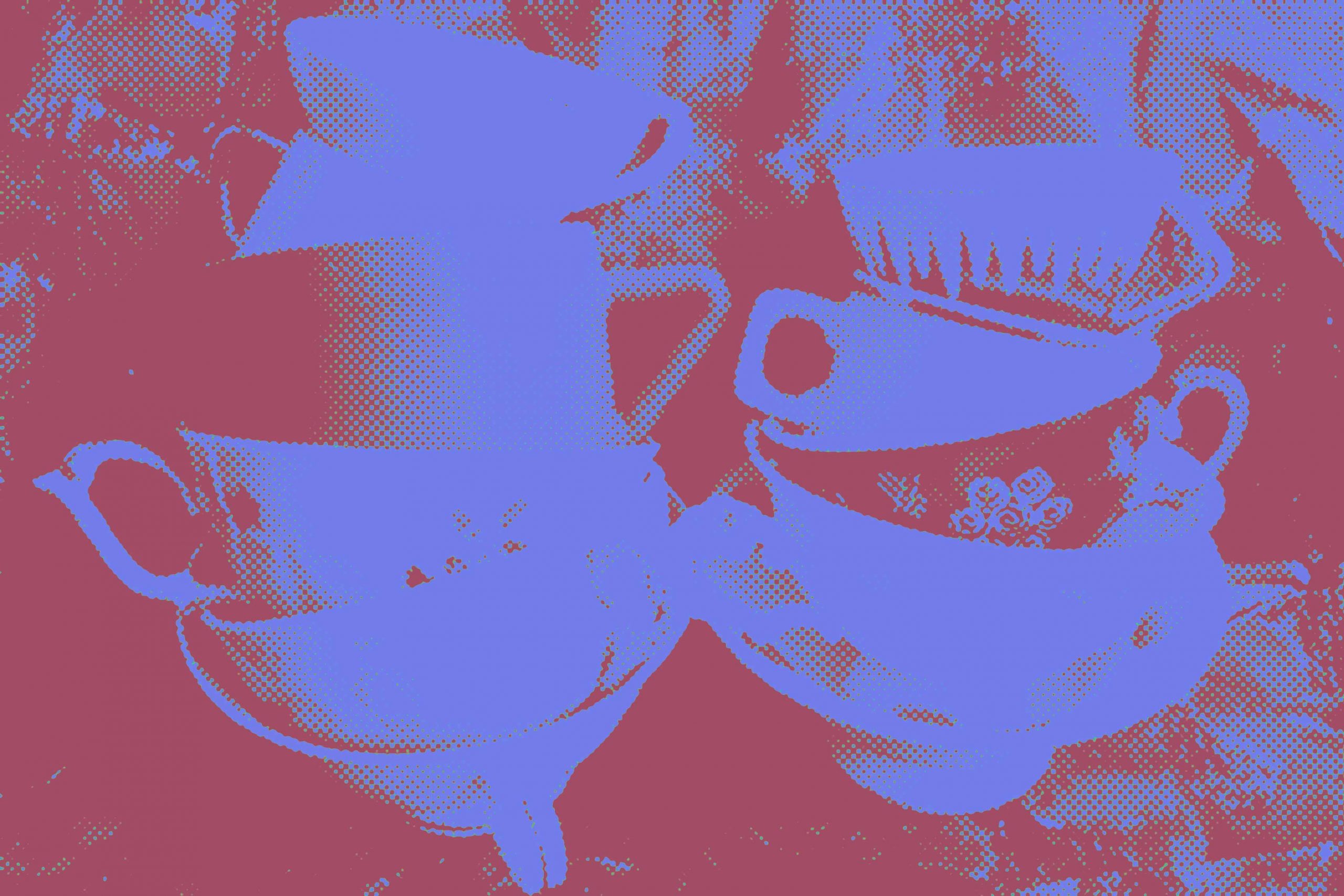Wenn Menschen am Tisch sitzen und miteinander sprechen, werden sie oft von diesen wichtigen Requisiten begleitet.
Denn oft wird beim Kaffee oder Tee geplaudert, zumindest tagsüber (später übernehmen Gläser die Kulisse).
Lass uns aber bei den Tassen bleiben, die so selbstverständlich geworden sind, dass sie fast übersehen werden, dabei machen die darin angebotenen Getränke selbst ein schwieriges Gespräch weniger trocken.
Was ist das denn, was eine gute Tasse ausmacht?

(Scroll down down down for the English summary)
Geschmackssache? Nicht nur. Was passiert mit einer Tasse und was kann dabei schiefgehen?
Das Wesentliche ist das Trinken, es müsste schon möglich sein. Da kommt der Tassenrand ins Spiel, die feinen leicht nach außen gewölbten Porzellanränder passen sich den durstigen Lippen perfekt an. Warum gibt es trotzdem hunderte von Modellen, die es der Menschheit zu beweisen versuchen, dass eine klobige fingerdicke Wand genauso fürs Trinken prädestiniert sein kann? Das sind diese Tassen und Becher, an deren Außenwand immer eine ausgetrocknete Kaffeespur klebt.
Halten ist in zweierlei Hinsicht wichtig: Der Henkel und das Ganze. Verschiedene Henkelformen quälen die Menschheit bereits seit Jahrhunderten, Barokoko! Kein Wunder, dass sich der kleine Finger aristokratisch in die Lüfte streckt, für ihn ist kein Platz da. Oft für die anderen Finger genauso wenig.
Halten ist aber auch Thema, wenn eine Tasse altmodisch in der Spüle abgewaschen wird. Das gibt es immer noch ab und zu. Manche Formen lassen sich sehr schlecht unter Wasser halten, das sind vor allem die kleinen konisch gestalteten Modelle. Fast ideal sind dagegen einige Tassen aus den 50/60er Jahren, die einen kleinen ausgebildeten Fuß haben, der der Tasse nicht nur Stabilität verleiht, sondern ist zum Halten sehr gut geeignet. Und dazu soooo schön (oder??). Kleinigkeiten, die eine Rolle spielen.
Glasur glänzend oder matt – die haptische Wirkung ist eine Sache, aber auch für Putzbarkeit ist die Oberfläche nicht unwichtig.
Kapazität bedeutet Wärme – logo, immer wieder nachgefüllte kleine Tässchen kühlen schneller aus, als voluminöse Becher. Deshalb beim kultivierten Teetrinken am Tisch mit ständigem gastfreundlichen Nachschenken können die Kleinen gewinnen, zum Arbeiten an den Rechner kommt lieber ein gefüllter Eimerbecher mit (umso schlimmer für die eventuelle Tastaturüberflutung).

Wichtig und nicht nur aus ästhetischen Gründen: Die Farbe. Innen schwarze Tassen sind sexy, aber wenn schwarzer Tee drin ist, sieht man die Farbe des Getränks nicht. Und als hartnäckige Schwarzteetrinkerin möchte ich diese Farbe sehen. Kaffee mit einem Schuss Milch fühlt sich dagegen sehr wohl darin.
Andere Farben im Inneren der Tassen können aber genauso Partykiller sein. Das betrifft auch dunkelblaue Töne, dabei muss ich an eine andere Sache denken: Ich hatte mal Gläser aus dunkelblauem Glas, sie schimmerten ganz toll in der Sonne, bis ich sie einmal mit O-Saft gefüllt hatte. Das sah dann aus, als hätte ich eine khaki Pfütze in einer extra schlammigen November Ausführung darin gehalten.
Nicht ganz unwichtig – das Schrankleben, also wie gut die Tassen oder Becher sich stapeln lassen. Die Türme sollten stabil stehen können. Da sind meine Favoriten aus den 50er Jahren etwas launisch, in dieser Hinsicht gewinnen schwedische Stapelbecher.
Was für mich noch die Tasse ausmacht, ist, dass sie keine witzigen Sprüche auf der Oberfläche trägt. Das betrifft nicht direkt die Funktionalität, aber meine Spruchallergie ist schon sehr ausgeprägt.
Was habe ich noch übersehen? Hat jemand noch eine Idee, was eine Tasse ausmacht? Kommentare erwünscht! Übrigens: Was einen Stuhl ausmacht, findet Ihr hier.
